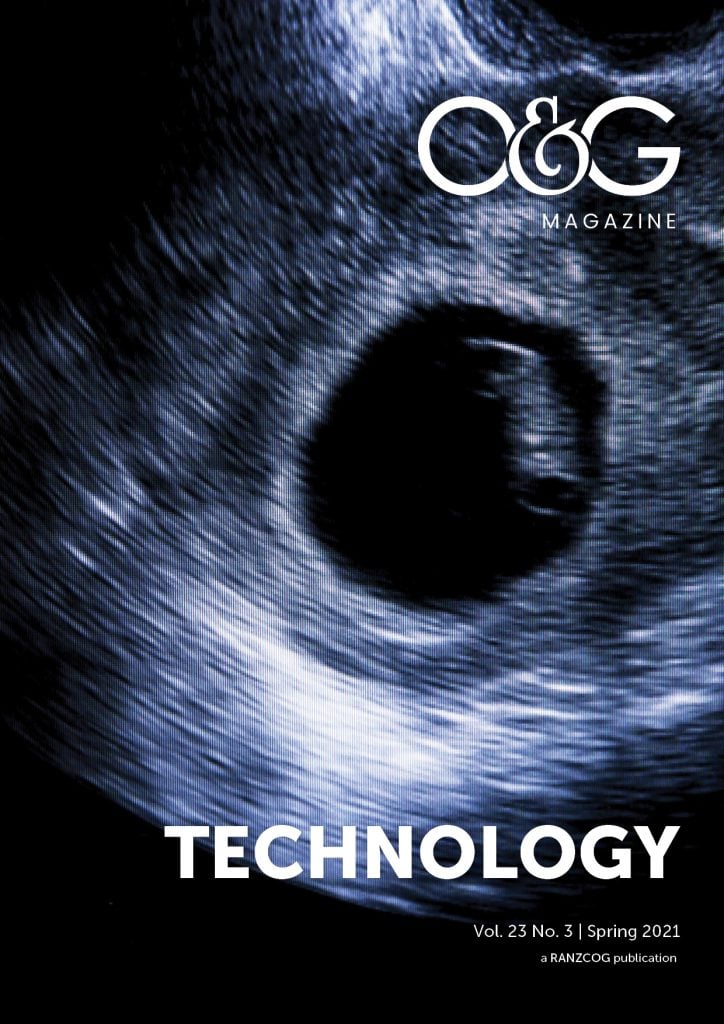Driving a 20-year-old ago car is still a similar experience to driving a modern car, but the incremental addition of technologies such as ABS brakes, traction control, air bags, satellite navigation, adaptive cruise control, lane keeping and parking assist (to name just a few) has led to a safer and more refined driving experience. Similarly, modern laparoscopic surgery has benefited from multiple incremental developments, but the benefits and limitations remain the same today as they did 20 years ago.
Laparoscopic surgery has been used in gynaecology for over 50 years.1 As technologies have advanced, it has become the standard of care for many benign and malignant gynaecological conditions, allowing increasingly complex procedures to be performed with less morbidity than traditional open approaches. It is difficult to isolate a single aspect of laparoscopic surgery whose technological progress has dramatically changed outcomes for patients or surgeons; rather, there has been incremental progress across a myriad of components that together have expanded the horizons of what is achievable through a minimally invasive approach.
Some of the important areas of recent progress in laparoscopic surgery have been in the fields of camera technologies, robotics, laparo-endoscopic single site (LESS) surgery and electrosurgical instruments. The range of complementary technological advances that have allowed surgeons to optimise these things, however, is vast, and includes advances in technologies such as simulation, virtual reality, entry methods, anti-adhesion products, anti-slip and patient positioning products, sutures, gas humidification and warming, and tissue extraction methods. In many cases, the benefits of a particular new technology can only be realised when other complementary technologies have advanced sufficiently to support it, and a lack of suitable supporting products can be one of the reasons new technologies fail or that implementing them can become prohibitively expensive.
There are other challenges, too, for new technologies to be successfully adopted and implemented. Many gynaecologists may have been made wary in recent times through experiences with technologies where issues emerged over time, such as meshes, hysteroscopic ablative and sterilisation procedures, or morcellation technologies, and this can discourage clinicians and health services from trialling new products. Additionally, cost is one of the most important factors that drives decision making at an organisational level, and being able to demonstrate improvements in patient outcomes is critical in making a case for innovation, yet it is difficult to study the incremental benefit of any one technology in a landscape of constant innovation and change.
Camera systems
There are a range of advances in camera technologies that have progressed the capabilities of laparoscopic surgery, such as 4K and 3D video imaging systems, integrated operating theatres, integration with virtual reality and artificial intelligence applications, and the ability to utilise enhanced imaging techniques such as near-infrared (NIR) fluorescence imaging with indocyanine green (ICG) during laparoscopic procedures.
One of the fundamental challenges of performing laparoscopic surgery is adapting to a two-dimensional representation of a three-dimensional space, and depth perception becomes especially important with increasingly complex procedures. Most 3D systems for laparoscopic and robotic surgery utilise dual-channel laparoscopes to provide two vertically separated images that, when viewed through specialised lightweight glasses, simulates the binocular imaging provided by two laterally separated eyes. The resultant visual effect, called stereopsis, is the perception of depth due to the disparities in the two images, and it is used by most surgeons during open surgery, but is lost when using a standard 2D laparoscope.2 In a simulation environment, 3D laparoscopic systems have been shown to shorten the learning curve for junior trainees performing standardised tasks on a box trainer, with fewer errors and faster operating times.3
Outside of the simulation environment the evidence is less robust, but pooled data across all surgical specialties suggests a shortened operative time and fewer complications with 3D systems. Specifically in gynaecology, there is evidence that 3D systems produce shorter operative times for more complex procedures such as those requiring suturing. 3D systems do have some pitfalls, however. Up to 30% of the general population and nearly 10% of surgeons are stereo blind, and therefore would not benefit from this technology.4 Additionally, 3D systems can increase visual fatigue, headaches and discomfort, and there are no prospective studies or RCTs directly regarding their cost.5
In contrast, 4K (or ‘ultra-high definition’) systems produce a 2D image but one with four times the number of pixels of standard high-definition systems. While these images lack the ability to provide binocular cues for depth perception in the same way that the images from 3D systems can, the improvements in picture quality allow for an enhancement of monocular depth cues that improves performance to a similar degree as 3D laparoscopic systems.6 7 They do not require the user to wear any special glasses, simplifying their introduction and use in a surgical environment. Currently there are several head-to-head studies underway comparing the benefits of 3D and 4K imaging systems in laparoscopic surgery.
There are a range of other enhanced imaging techniques that can be used in gynaecologic laparoscopy for both benign and malignant conditions. In endometriosis surgery, various techniques have been used to map the borders of deep infiltrating endometriosis nodules including 5-aminolevulinic acid-induced fluorescence, autofluorescence imaging, methylene-blue, narrow-band imaging and NIR imaging using ICG.8 NIR-ICG has been shown to be useful in defining the border between endometriotic nodules and healthy tissue, but data regarding its diagnostic value for less severe endometriosis has been mixed.9 10 NIR-ICG has a range of other applications in laparoscopic surgery, and in particular has been used for sentinel lymph node mapping in gynaecologic cancers.11
Robotics
Robotic assisted surgery (RAS) has become increasingly popular in gynaecology, especially in the US, where nearly half of all laparoscopic hysterectomies are performed using some robotic assistance.12 Robotic systems incorporate a mechanical robot which operates the camera and surgical instruments, and a separate console from which the surgeon operates. In addition to the technology involved in the mechanics of the robot itself, they integrate other technological advances used in conventional laparoscopy such as 3D cameras, articulated instruments and advanced electrosurgical devices, and are capable of single-incision surgery. They require a significant outlay for the acquisition of the robotic system, as well as additional training for the surgeon and theatre staff. Purported benefits over conventional laparoscopy include 3D vision, articulated instruments with greater freedom of motion, more precise dissection, tremor filtration and a shorter learning curve.13 These advantages may allow surgeons to complete more difficult cases with robotic assistance than would have been possible laparoscopically, but when compared directly with conventional laparoscopy, the evidence supporting a benefit for patients is limited. Regarding hysterectomy, a 2019 Cochrane review found that there was a lack of high-quality evidence to support any difference between conventional laparoscopy and RAS, but that there was no demonstrable difference in intraoperative or postoperative complications, with a longer operating time in the robot-assisted group (mean difference 41 minutes) and a shorter mean length of hospital stay for RAS patients by 0.3 days.14
Electrosurgery
A number of developments in electrosurgery have led to improved safety and efficacy. Isolated electrosurgical units without reference to ground are much safer than the original ground referenced generators. Active electrode monitoring minimises the risk of burns from stray currents and damaged instruments. Tissue sealing technologies assess the impedance of tissue as the diathermy is activated to provide the optimal amount of power for vessel sealing with minimal thermal spread. The use of ultrasonic energy systems such as the harmonic scalpel provides a reliable and safe alternative to electrosurgery, and in some instruments such as the Thunderbeat (Olympus) both electrosurgical and ultrasonic modalities have been combined
LESS surgery
Laparo-endoscopic single site (LESS) surgery is not new to gynaecology, being used for tubal sterilisation for around 50 years.15 The premise is to utilise multiple ports or instruments through a single incision, avoiding the additional morbidity of each subsequent port. It can hardly be described as a new technology, but rather is finding new applications as other technologies advance in the field of minimally invasive surgery, allowing increasingly complex procedures to be performed using a single incision. The range of gynaecologic procedures able to be performed using LESS includes hysterectomy, adnexal procedures, pelvic lymphadenectomy and resection of endometriosis.16 The use of bariatric length and angled laparoscopes and articulated instruments can help to overcome the challenges of instrument crowding and lack of triangulation that can limit the functionality of LESS17 More recent progress in the space of LESS has been in combining it with robotic surgery (R-LESS) or natural orifice transluminal endoscopic surgery (NOTES), which when performed vaginally is known as vNOTES. There is growing experience with vNOTES to perform a range of gynaecological conditions including myomectomy, adnexectomy, sacrocolpopexy, tubal re-anastomosis, pelvic lymph node dissection and hysterectomy.18 Data supporting the benefit of vNOTES over conventional laparoscopy is lacking, however, with research so far focusing on reporting the feasibility and safety of this approach. In terms of robotics, the da Vinci SP™ utilises a single port rather than a conventional multi-port platform. Data thus far supports that R-LESS surgery is safe and feasible, and has equivalent outcomes to multiport robotic surgery with less scarring, but high-quality comparative studies are needed before its superiority over other approaches can be assumed.19
The future
The next revolutionary step for cars will be fully autonomous self-driving. This has taken longer than expected but is likely to be available in several countries within the next decade. The next big development step for laparoscopic surgery will be robotic surgery with artificial intelligence assisting the surgeon to minimise complications. Perhaps the robot will be able to advise the surgeon that there is an 87% chance that the structure they are about to cut is the ureter and ask them to confirm that they wish to proceed before allowing it! Subsequent development of a fully autonomous surgical robot is currently science fiction, but may not be as far away as we think.
Conclusion
Surgery has developed in an evolutionary, rather than revolutionary way. The implementation of new technologies has allowed surgeons to develop new techniques and procedures with increased safety and reliability.
References
- The next big development step for laparoscopic surgery will be robotic surgery with artificial intelligence assisting the surgeon to minimise complications.
- Yim C, Lo CH, Lau MH, et al. Three-dimensional laparoscopy: is it as good as it looks?—a review of the literature. Annals of Laparoscopic and Endoscopic Surgery. 2017;2(8).
- Arezzo A, Vettoretto N, Francis NK, et al. The use of 3D laparoscopic imaging systems in surgery: EAES consensus development conference 2018. Surgical Endoscopy. 2019;33(10):3251–74
- Arezzo A, Vettoretto N, Francis NK, et al. The use of 3D laparoscopic imaging systems in surgery: EAES consensus development conference 2018. Surgical Endoscopy. 2019;33(10):3251–74
- Yim C, Lo CH, Lau MH, et al. Three-dimensional laparoscopy: is it as good as it looks?—a review of the literature. Annals of Laparoscopic and Endoscopic Surgery. 2017;2(8).
- Yim C, Lo CH, Lau MH, et al. Three-dimensional laparoscopy: is it as good as it looks?—a review of the literature. Annals of Laparoscopic and Endoscopic Surgery. 2017;2(8).
- Harada H, Kanaji S, Hasegawa H, et al. The effect on surgical skills of expert surgeons using 3D/HD and 2D/4K resolution monitors in laparoscopic phantom tasks. Surgical Endoscopy. 2018;32(10):4228–34.
- Al-Taher M, Hsien S, Schols RM, et al. Intraoperative enhanced imaging for detection of endometriosis: A systematic review of the literature. European Journal of Obstetrics and Gynecology and Reproductive Biology. 2018;224:108–16.
- Siegenthaler F, Knabben L, Mohr S, et al. Visualization of endometriosis with laparoscopy and near-infrared optics with indocyanine green. Acta Obstetricia et Gynecologica Scandinavica. 2020;99(5):591–7.
- Cosentino F, Vizzielli G, Turco LC, et al. Near-Infrared Imaging with Indocyanine Green for Detection of Endometriosis Lesions (Gre-Endo Trial): A Pilot Study. Journal of Minimally Invasive Gynecology. 2018;25(7):1249–54.
- Papadia A, Imboden S, Siegenthaler F, et al. Laparoscopic Indocyanine Green Sentinel Lymph Node Mapping in Endometrial Cancer. Annals of Surgical Oncology. 2016;23(7):2206–11.
- Desai VB, Guo XM, Fan L, et al. Inpatient Laparoscopic Hysterectomy in the United States: Trends and Factors Associated with Approach Selection. Journal of Minimally Invasive Gynecology. 2017:151-158.e1.
- Lawrie TA, Liu H, Lu DH, et al. Robot-assisted surgery in gynaecology. Cochrane Database of Systematic Reviews. 2019.
- Lawrie TA, Liu H, Lu DH, et al. Robot-assisted surgery in gynaecology. Cochrane Database of Systematic Reviews. 2019.
- Wheeless CR. Elimination of second incision in laparoscopic sterilization. Obstetrics and Gynaecology. 1972;39(1):134–6.
- Escobar PF, Starks D, Fader AN, et al. Laparoendoscopic single-site and natural orifice surgery in gynecology. Fertility and Sterility. 2010;94(7):2497–502.
- Chern BSM, Lakhotia S, Khoo CK, Siow AYM. Single incision laparoscopic surgery in gynecology: Evolution, current trends, and future perspectives. Gynecology and Minimally Invasive Therapy. 2012;1:9–18.
- Li C-B, Hua K-Q. Transvaginal natural orifice transluminal endoscopic surgery (vNOTES) in gynecologic surgeries: A systematic review. 2019. doi.org/10.1016/j.asjsur.2019.07.014
- Matanes E, Lauterbach R, Boulus S, et al. Robotic laparoendoscopic single-site surgery in gynecology: A systematic review. European Journal of Obstetrics and Gynecology and Reproductive Biology. 2018;231:1–7.







Leave a Reply